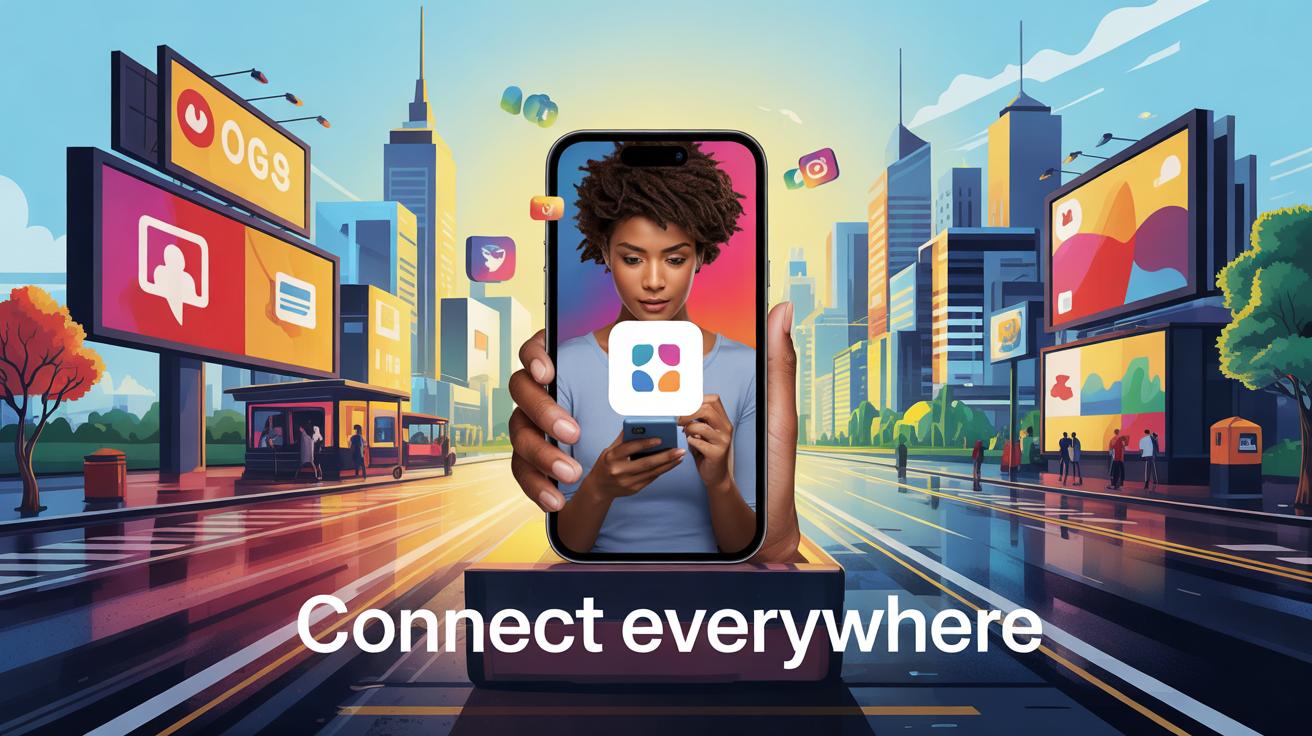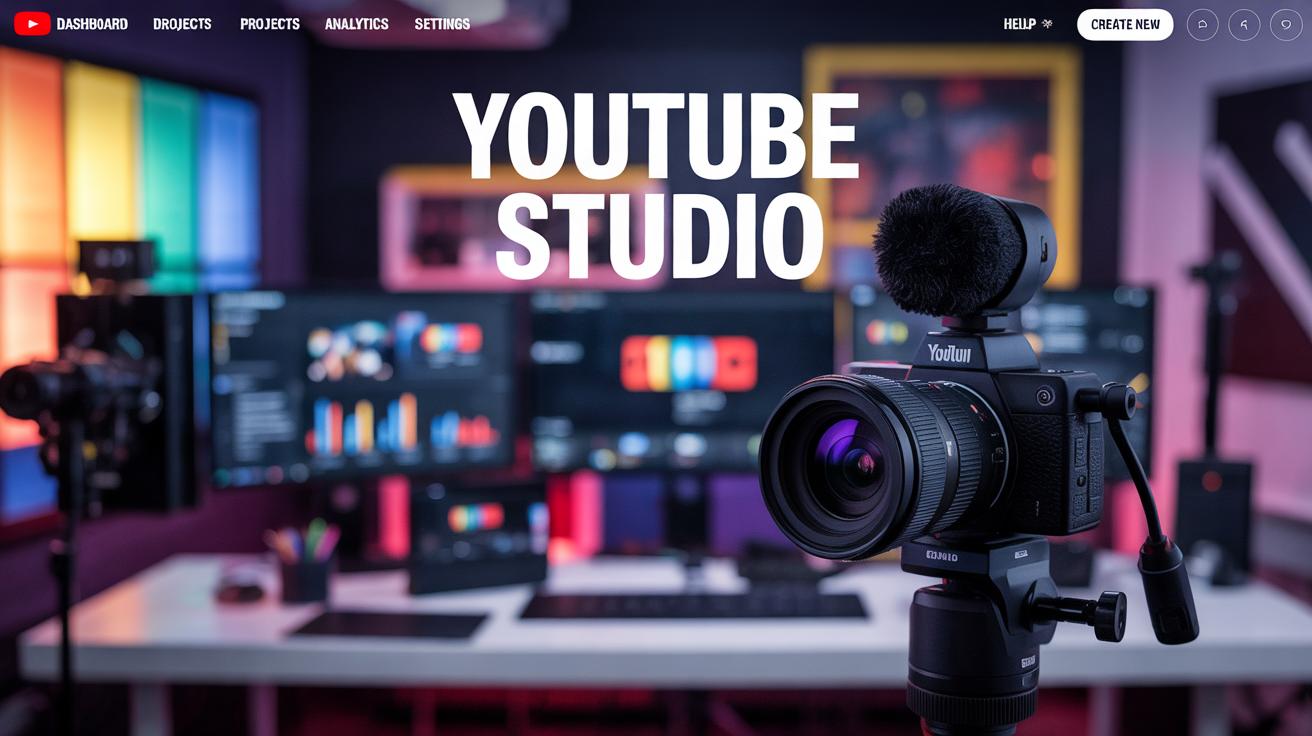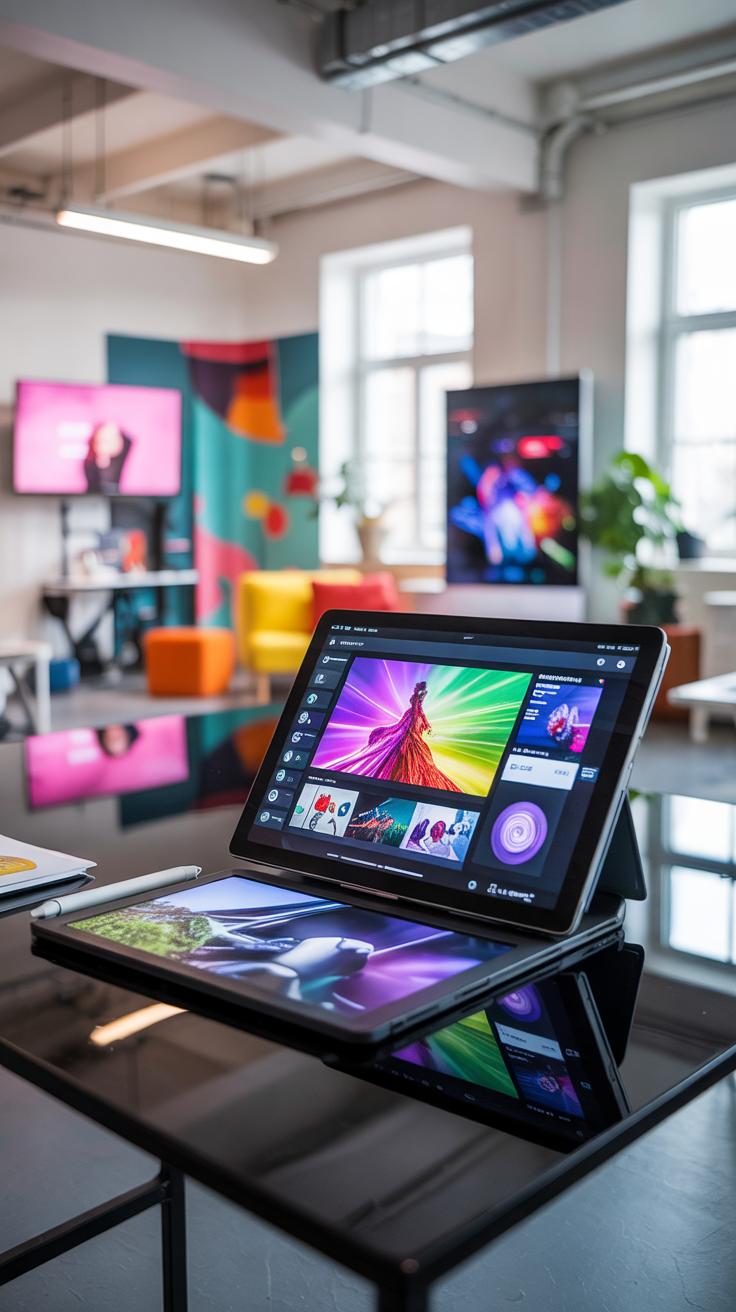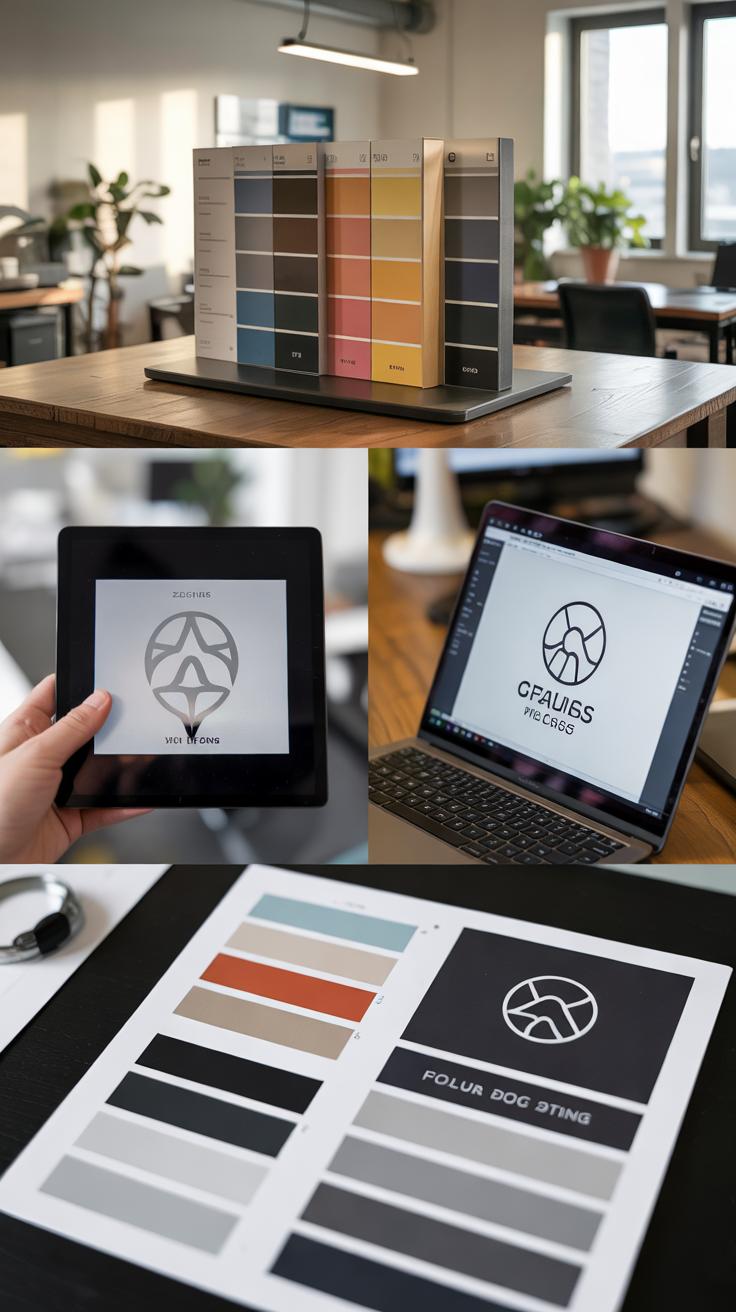
Cutting-Edge Design Strategies for Social Media Success
Introduction
In the fast-changing world of social media design, using fresh ideas is key to grabbing people’s attention and getting them involved. As platforms change all the time, content creators and marketers really need to dive into new design approaches that fit each social network. These ideas make posts look better and match how users behave, helping to boost how far content reaches and how people interact with it. When you get the basics of solid social media design, it helps brands share their message better and build real connections with the audience they want to reach.
This article takes a look at key design tips that can help you succeed on social media. We’ll talk about why having a clear visual style, keeping your branding consistent, and engaging users through good graphic design matters. By checking out what makes different social media platforms tick, you’ll pick up helpful ideas to use design elements that really connect with people. In the end, these tips will help boost your social media game and expand your online presence.
The Importance of Visual Identity in Social Media
In the highly visual realm of social media, the significance of visual identity cannot be overstated. Strong visual elements foster brand recognition and trust, signaling to users that a brand is professional and values aesthetic consistency. A well-crafted visual identity involves a cohesive blend of color schemes, typography, imagery, and logo placement, each element playing a distinct role in crafting an engaging social media presence.
When a brand maintains a unified visual identity across multiple platforms, users encounter a seamless experience that reinforces brand loyalty. This consistency not only aids in recognition but also becomes a cornerstone for building trust. When followers frequently see a brand’s identifiable visuals, they are more likely to associate those visual cues with the brand’s values and offerings, making it easier for the brand to stand out amid the clutter of competing content.
The Role of Cohesive Visual Elements
Cohesion in visual identity can be achieved through effective design strategies that integrate colors, fonts, and imagery styles. For instance, a limited palette strengthens recognition; colors provoke emotions and have psychological associations, thereby influencing user perception.
Here are some key strategies to enhance visual cohesiveness:
- Color Psychology: Selecting colors that evoke desired emotions can be pivotal. A warm palette might induce feelings of comfort, while cooler tones might invoke trust.
- Typography Consistency: Using a maximum of two or three fonts across posts can help reinforce brand identity and make the content easier to read.
- Image Style Uniformity: Whether opting for illustrations, photographs, or a combination thereof, standardizing the image style contributes to a recognizable aesthetic.
- Logo Usage: Consistently positioning the logo across posts promotes brand visibility and familiarity, further engendering trust and recognition.
These cohesive elements collectively establish a visual language that facilitates the communication of brand narratives. By employing sophisticated design strategies, brands can harness the power of visual identity to enrich engagement on social media platforms.
Cultivating a distinctive visual presence involves more than mere aesthetics; it is a strategic move that aligns brand values with user expectations. This connection ultimately cultivates a loyal community which resonates with the brand, creating an avenue for sustained success in the competitive landscape of social media.
Understanding User Behavior and Preferences
Analyzing User Behavior to Inform Design Decisions
To achieve success on social media, it is vital to understand the intricacies of user behavior and preferences. This understanding serves as a cornerstone for building effective design strategies that resonate with targeted audiences. Users interact with content based on their individual motivations, which range from seeking entertainment to acquiring information or connecting with others. Through in-depth analysis of user behavior, brands can tailor their design elements to align with these motivations, thus enhancing engagement and fostering lasting connections.
User behavior can be analyzed through a variety of methods, including data analytics, A/B testing, and audience segmentation. By examining metrics such as click-through rates, engagement levels, and session durations, brands can gain invaluable insights into what captivates their audience. For instance, understanding peak activity times allows brands to schedule posts for maximum visibility. Similarly, identifying preferred content types—be it videos, infographics, or carousel posts—enables enhanced visual strategies that align closely with audience expectations.
Tailoring Content to Audience Preferences
Creating compelling content that resonates with users requires a meticulous focus on their preferences. Each audience comprises varied segments, each with unique tastes and motivations. Segmentation allows brands to create personalized content that speaks directly to individual interests, boosting the likelihood of engagement. In this approach, brands can utilize tools like surveys or social listening platforms to gather direct feedback from users, determining which themes, visuals, or messaging styles appeal most to their target demographic.
Implementing tailored design elements, such as color schemes, typography, and imagery, that reflect audience preferences can significantly enhance user experience. This customization is not merely aesthetic; it creates a sense of familiarity and relatability that can cultivate deeper brand loyalty. For instance, utilizing user-generated content not only showcases authenticity but also makes followers feel valued, further encouraging them to engage and share.
To really get what users like and how they behave is super important when it comes to making great social media strategies. Knowing this helps brands do more than just whip up content; they’re out there creating experiences that actually connect with people personally. When there’s a good match between design, content, and what users expect, that’s what drives success on social media and gives brands a strong edge in a crowded space.
PlatformSpecific Design Considerations Key Design Differences for Social Media Success
Tailoring Content to Fit Unique Requirements
Mastering the nuances of social media design requires a keen understanding of how each platform operates and what visual elements resonate with its audience. Each social media platform, from Facebook to Instagram to TikTok, comes with its own set of specifications and user expectations. Recognizing these differences is vital for any brand hoping to optimize its visual engagement.
Instagram is all about beautiful pictures and telling stories with visuals. It’s super important to use bright colors and eye-catching layouts. Brands should think about how to set up their posts in a grid format for a nice, clean look. On this platform, it’s not just about getting a message across; it’s about making people feel something, often with lifestyle shots. Plus, using carousel posts can really up the interaction since folks love to swipe through a bunch of images or videos to dive deeper.
Twitter’s design is all about being short and sweet. The visuals need to back up the quick messages. With tweets having a character limit, using eye-catching images and infographics is key to grabbing attention fast. Plus, the way GIFs are used on the platform can really boost messages, adding a fun or emotional touch that gets users more involved.
Facebook, as a hybrid platform, requires a multifaceted approach. While it still values strong images, it supports longer posts that can include links, texts, and videos. The design must therefore balance visual appeal with the necessity of conveying more information. Brands should leverage Facebook’s formats—like Stories and Live videos—to create immediate interaction, using eye-catching thumbnails to draw users in.
TikTok’s all about short videos which means brands need to think differently when they design their content. Quick cuts and cool visuals paired with catchy sound are a must. Trends can change fast here so brands really have to keep their eyes peeled on what’s hot and what’s not. Vertical video is the way to go, and adding a bit of spontaneity and realness helps brands connect with younger folks.
To make social media design work, it’s all about knowing what each platform needs. You really have to create content that fits what each audience wants to see. When you get these strategies down, brands can grab user attention and make it easier for people to interact and engage with them.
Incorporating Rich Media Enhancing Visual Engagement Through Innovative Strategies
The Impact of Rich Media on Social Media Design
In the busy world of social media, how appealing your content looks can really change how users interact and how loyal they are to your brand. Using cool media like videos, animations, and great graphics is super important when creating eye-catching social media designs. These types of content go way beyond just basic images and text, giving a lively experience that grabs people’s attention. What makes rich media work well is not just how good it looks, but also how it can share complicated messages in a way that’s easy to follow and engaging.
Utilizing video content, for example, can dramatically increase user interaction. According to recent studies, posts featuring videos garner more shares and comments compared to those containing only images or text. This trend illustrates how the immediacy of visual storytelling can effectively engage viewers, with videos serving as captivating gateways that hold their interest longer than static images. Whether it’s through tutorials, promotional content, or behind-the-scenes glimpses, videos allow brands to showcase their personality and connect with their audience on a deeper level.
Animations and eye-catching graphics can elevate social media content by injecting a sense of movement and rhythm. These elements not only provide visual stimulation but can also simplify complex information through infographics or animated sequences. For instance, animated graphics can guide viewers through a series of steps or demonstrate product features in an accessible format, making intricate topics more digestible. Such techniques enhance cognitive retention, allowing users to recall the information presented more effectively.
Using eye-catching media like videos and images the right way can really boost your organic reach. Social media sites love content that gets people engaged, and they tend to promote posts that get lots of likes, shares, and comments. By adding some interesting rich media, brands can show up more often and connect with potential customers who might not have seen them before, helping to build new relationships and grow their audience.
Rich media is a key part of social media design strategies. When used right, videos, animations, and really good graphics grab attention and encourage interaction and understanding. Brands want to connect with users on different platforms, so mixing in these lively elements is super important. It helps keep users engaged over time and builds strong brand loyalty in today’s competitive social media world.
Emphasizing Brand Consistency Strategies for Unified Social Media Design
Brand consistency is a vital component of building a recognizable and trustworthy presence across social media platforms. In an environment flooded with content, maintaining a unified brand image is crucial for standing out and fostering brand loyalty. Design elements are integral to achieving this consistency, as they shape not only the visual identity but also the overall perception of the brand.
One of the most effective strategies for ensuring brand consistency across social media is the use of a cohesive color palette. Selecting a limited set of colors that reflect the brand’s personality allows for a seamless transition when users encounter different posts or platforms. For instance, a bold and vibrant color scheme can evoke feelings of energy and creativity, while softer pastels might suggest calmness and approachability. By employing these colors consistently, brands can create a recognizable aesthetic that resonates with their audience.
Typography also plays a crucial role in reinforcing brand identity. Brands should establish specific typefaces that reflect their values and tone, ensuring that all text across platforms aligns with this choice. Consistent typography not only aids in visual harmony but also enhances readability, contributing to a better user experience. Utilizing the same fonts for headlines, captions, and body text allows users to intuitively recognize the brand, regardless of the platform.
Incorporating design elements like logos, iconography, and imagery style is equally essential. A well-designed logo should be adaptable yet consistent in its application, serving as a trademark that appears uniformly across media. Iconography that aligns with the brand’s message can enhance communication and engagement. Furthermore, maintaining a signature style for images—whether through filters, themes, or layouts—ensures that all visual content is immediately identifiable as belonging to the brand.
An overarching theme within these strategies is the importance of adhering to brand guidelines. Establishing a comprehensive style guide that outlines color usage, typography, imagery, and tone can help all team members and content creators produce consistent content, regardless of who is posting. This shared understanding not only streamlines the process of content creation but also strengthens the overall brand image.
Keeping your brand consistent on social media really boosts visual engagement and helps build trust and recognition with users. When you pay attention to design elements that match, you’ll create a strong presence that backs up your message and connects well with your audience.
UserCentric Design Principles Enhancing Usability and Accessibility in Social Media
Understanding User-Centric Design
User-centric design principles play a pivotal role in creating compelling social media content that resonates with audiences. This approach prioritizes the needs, preferences, and behaviors of users throughout the content creation process, ensuring that all design elements are accessible and easy to use. By actively involving users in the design cycle, from research through testing, brands can enhance the relevance and impact of their social media outputs. Tailoring content to meet the distinct requirements of diverse audience segments can significantly elevate engagement levels and community interaction.
Accessibility in Social Media Design
Accessibility must be at the forefront of any social media design strategy. As platforms evolve, the importance of creating content that everyone can engage with—regardless of ability—cannot be overstated. This includes utilizing appropriate color contrasts to accommodate visually impaired users, providing alt text for images to aid screen reader technologies, and ensuring that videos come with captions. By making social media designs more inclusive, brands not only widen their reach but also foster a more engaged community. Enhancing user experience through such inclusive design considerations reinforces the brand’s commitment to all demographics.
The significance of usability cannot be overlooked either. Social media platforms inundate users with content, and designs must be intuitive enough to capture attention in mere seconds. Clear navigation, simple layouts, and well-organized content help in mitigating cognitive overload, enabling users to consume and interact with information effortlessly. Incorporating features that facilitate user interaction—such as easy sharing options, comment sections, and responsive design—improves overall usability, encouraging interactions that are vital for social media success.
Focusing on these user-centric principles not only improves engagement but also fosters brand loyalty. Users are more likely to connect with brands that consider their experience and needs. Consistency across different platforms, while maintaining access and usability, reinforces a cohesive brand identity. This connection is invaluable when coupled with analytical insights that measure user interactions and engagement levels, enabling brands to continuously iterate and elevate their strategies for ongoing success in the dynamic social media landscape.
Measuring Success Through Analytics The Role of Analytics in Evaluating Social Media Design
Understanding the Impact of Visual Engagement
When it comes to rocking social media, the link between good design and real results is super clear. Brands are pouring money into eye-catching content, so figuring out how these design pieces actually affect what users do is really important. Analytics acts like the backbone that helps us see how design shapes interaction and engagement. By smartly using analytics, we can learn what clicks with the audience and use that info to make better design choices in the future.
Visual content can capture attention, but it must also drive results. By employing analytics, brands can gain a broader perspective on how their designs are performing and where improvements are necessary. This data enables marketers to connect the dots between aesthetic appeal and key performance indicators (KPIs) that spotlight the effectiveness of their visual approach.
Key Performance Indicators that Matter
Understanding which metrics to focus on is essential for measuring the success of social media design. Key performance indicators include:
- Engagement Rate: This metric combines likes, shares, comments, and clicks, providing an overall measure of how well content resonates with the audience. A higher engagement rate often signifies that the visual design is effective and appealing.
- Click-Through Rate (CTR): This indicator reflects the percentage of users who clicked on a link within a post. A higher CTR indicates that the design compels users to take action, suggesting that visuals are not only eye-catching but also functional.
- Reach and Impressions: These metrics provide insight into how many unique users have seen the content and how many times it has been displayed, respectively. Together, they illustrate the visibility of design elements and their potential to attract a larger audience.
- Conversion Rate: Ultimately, a successful social media design should lead to meaningful actions, such as purchases or sign-ups. Tracking the conversion rates can reveal how effective the design approaches are in driving user behavior.
By regularly analyzing these key performance indicators, brands can better understand the relationship between their design choices and overall success on social media. This continuous feedback loop allows for the refinement of design strategies, ensuring that visual content remains relevant and engaging while ultimately contributing to business objectives.
Conclusions
Effective social media design goes beyond just looking good. It’s about a smart way to combine your brand’s message, understanding your audience, and using great visuals. When brands use the up-to-date techniques we talked about, they can really boost their visibility and get more people engaged on social media. The details of graphic design are super important for turning ideas into visuals that click with people. This kind of interaction can help build stronger relationships with the community and increase brand loyalty.
As social media continues to evolve, staying ahead of design trends and understanding the platform-specific requirements will be key to maintaining relevance. By investing in thoughtful design strategies, businesses can foster deeper relationships with their audience, ensuring that their content stands out amidst the noise of social media. The journey toward social media success is an ongoing process of adaptation, innovation, and creative exploration.



















